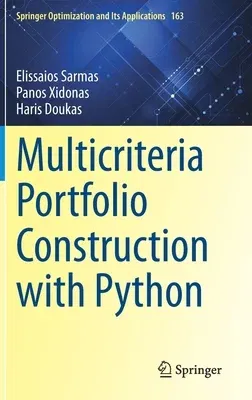This book covers topics in portfolio management and multicriteria
decision analysis (MCDA), presenting a transparent and unified
methodology for the portfolio construction process. The most important
feature of the book includes the proposed methodological framework that
integrates two individual subsystems, the portfolio selection subsystem
and the portfolio optimization subsystem. An additional highlight of the
book includes the detailed, step-by-step implementation of the proposed
multicriteria algorithms in Python. The implementation is presented in
detail; each step is elaborately described, from the input of the data
to the extraction of the results. Algorithms are organized into small
cells of code, accompanied by targeted remarks and comments, in order to
help the reader to fully understand their mechanics. Readers are
provided with a link to access the source code through GitHub.
This Work may also be considered as a reference which presents the
state-of-art research on portfolio construction with multiple and
complex investment objectives and constraints. The book consists of
eight chapters. A brief introduction is provided in Chapter 1. The
fundamental issues of modern portfolio theory are discussed in Chapter
2. In Chapter 3, the various multicriteria decision aid methods, either
discrete or continuous, are concisely described. In Chapter 4, a
comprehensive review of the published literature in the field of
multicriteria portfolio management is considered. In Chapter 5, an
integrated and original multicriteria portfolio construction methodology
is developed. Chapter 6 presents the web-based information system, in
which the suggested methodological framework has been implemented. In
Chapter 7, the experimental application of the proposed methodology is
discussed and in Chapter 8, the authors provide overall conclusions.
The readership of the book aims to be a diverse group, including fund
managers, risk managers, investment advisors, bankers, private
investors, analytics scientists, operations researchers scientists, and
computer engineers, to name just several. Portions of the book may be
used as instructional for either advanced undergraduate or post-graduate
courses in investment analysis, portfolio engineering, decision science,
computer science, or financial engineering.

